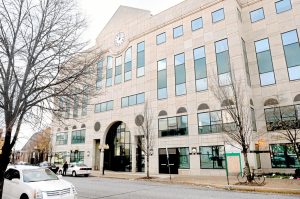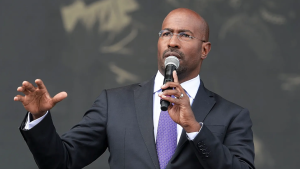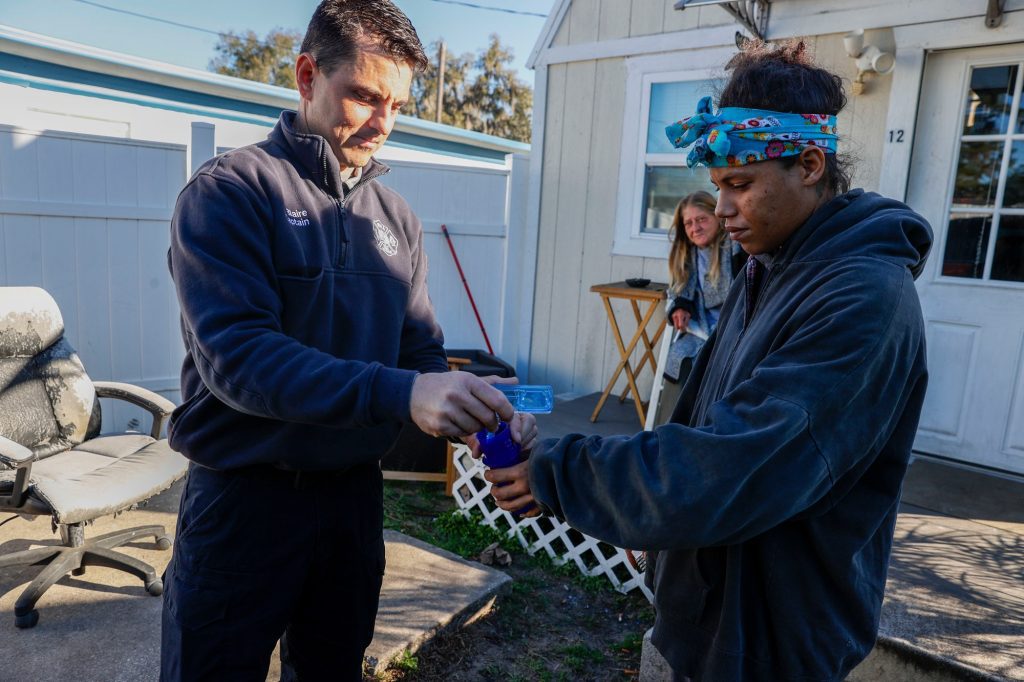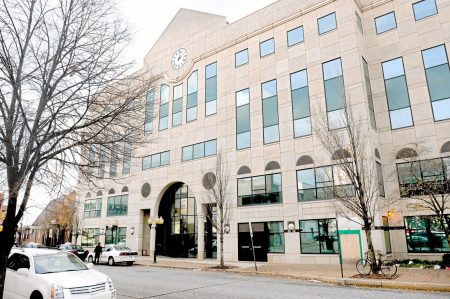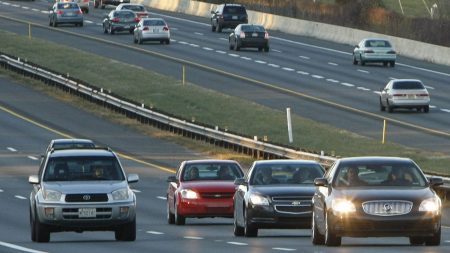Lauren Peace, Tampa Bay Times | (TNS) KFF Health News
OCALA, Fla. — Fire Capt. Jesse Blaire navigated his SUV through the mobile home park until he saw the small beige house with white trim and radioed to inform dispatchers that he'd arrived.
There, Shawnice Slaughter waited on the steps, wiping sleep from her eyes.
“Good morning, Shawnice,” Blaire said. “How are you feeling today?”
“I’ve been good, I’ve been good,” Slaughter said. “Much better.”
Three days earlier, Blaire — a paramedic who leads the fire department’s emergency medical team — met Slaughter at a nearby hospital. She had overdosed on opioids. It took four vials of an overdose reversal medication and dozens of chest compressions to get her breathing again.
At the hospital, Blaire told Slaughter about a free program that could help. It wouldn’t just connect her with a recovery center but would also get her doctors’ appointments, plus rides there. More important, she would get medicine to alleviate withdrawal symptoms so she wouldn’t search for drugs to ease the sickness. Blaire would bring that medication, daily, to her home.
“I have a son,” Slaughter, 31, told Blaire. “I need to be alive for him.”
Every morning since, Blaire had driven over for a check-in. He reminded Slaughter of appointments and took note of what she needed: clothes, food, help with bills.
And at the end of each visit, from a lockbox in the back of his car, he dispensed to her a couple of tiny, lifesaving tablets.
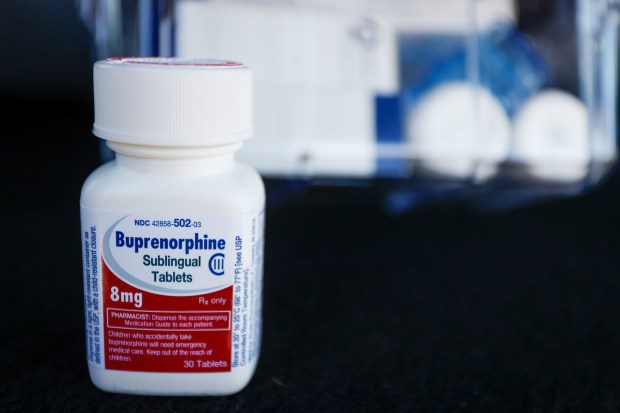
Those tablets — a medicine called buprenorphine — represent a tidal change in the way counties in Florida and other states are addressing the opioid crisis. The idea: Get addiction medication to people who need it by meeting them where they are. Sometimes, that’s on the street. Sometimes, it’s in the driveway of a big house with a swimming pool. Sometimes on the steps of a modest home like Slaughter’s.
********
For a long time, many people who could benefit from buprenorphine, commonly known by the brand name Subutex, couldn’t get it.
Up until recently, doctors needed a federal waiver to prescribe it to treat opioid use disorder. Amid misunderstandings about treating opioid use disorder with medication, only about 5% of doctors nationally underwent the training to qualify. And in 2021, only 1 in 5 people who could have benefited from opioid addiction medication were receiving buprenorphine or another drug therapy.
But as evidence supporting the drug’s efficacy grew and the urgency mounted to curb opioid deaths, Congress removed the waiver requirement in late 2022, clearing the way for greater availability.
And in rare cases, such as in Ocala, medics on the front lines began bringing treatment to patients’ front doors.
In Florida, the state-run Coordinated Opioid Recovery Network, known as the CORE Network, provides guidelines on medicine distribution to areas hit hard by overdoses. Services through the network are free for patients, funded by money from the state’s opioid settlement.
The network appears different in each of its 13 counties. Not all hand-deliver buprenorphine. However, the shared objective is to establish a single entry point for services that have typically been separated and challenging for patients to navigate, such as mental health care and housing support.
In a recovery environment full of poor quality facilities and unaffordable costs, simplifying the process for patients has the potential to make a significant impact.
“We are aware that the more people engage with services, the more they are treated with dignity, the more likely they are to reduce or stop drug use,” said Susan Sherman, a public health professor at Johns Hopkins University.
As opioid settlement dollars continue to come in, state officials have said they hope to expand to more counties.
********
Becoming a firefighter and paramedic satisfied Blaire’s craving for adrenaline and his conviction, informed in part by his Christian background, that he was put on this Earth to help others.
At 20, he imagined responding to car crashes and heart attacks, broken bones and punctured flesh. But after years on the job with Ocala Fire Rescue, the calls began to change.
Initially, Blaire felt some resentment toward the people overdosing. His team was suddenly responding to hundreds of such calls a year. He viewed drug use as a moral failure. What if a grandmother had a heart attack or a kid drowned while his team was on an overdose call?
Unlike with other emergencies, he never really felt he was saving a life when responding to an overdose. It was more like delaying death.
Repeatedly, he’d administer naloxone, an overdose reversal medication often known by one of its brand names, Narcan, and take them to the hospital, only to find they’d overdosed again after being discharged. One Christmas, he said, he responded to the same person overdosing five times on a single shift.
“I didn’t understand it. I thought that they wanted to die,” said Blaire, 47. “I’m embarrassed to say that now.”
About a decade ago, the extent of the epidemic had already become evident to Blaire’s crew. It seemed the team was responding to overdoses at big houses in wealthy neighborhoods nearly as often as they were in the park and under the bridge.
One week, his team went to a home on a cul-de-sac with two kids and a swing set — the kind of place families take their children trick-or-treating.
The dad had overdosed. The next week, it was the mom.
“Money can mask any problem, but we’ve seen it from the top to the bottom,” Blaire said.
Over time, Blaire began to understand addiction as the disease it is: a physiological change to someone’s brain that traps them in a dangerous cycle. Maybe it started with a prescription painkiller after surgery, or an indulgence at a party, but the majority of people weren’t using drugs to get high, he realized. They were using them to avoid being sick.
“Imagine the worst flu you’ve ever had, then make it a lot worse,” Blaire said.
When a person dependent on opioids stops taking them, their body goes into withdrawal, often accompanied by shakes, nausea, fever, sweating, and chills. Though rare, people can potentially die from opioid withdrawal syndrome. However, historically, the emergency health care system has focused on reversing overdoses, rather than addressing the withdrawal symptoms that lead people back to drugs.
In the past, Blaire noted that he observed patients being discharged from the hospital with minimal support, such as just a phone number for a recovery center. It could be difficult to get an appointment, not only due to wait times or insurance issues, but also because the patients were not stable — they were experiencing withdrawal. Blaire mentioned that they would often relapse in order to get through the day.
“‘Good luck, you’re on your own,’” Blaire mentioned. “That’s how it was. And that doesn’t work for somebody who is sick.”
Under Blaire’s leadership, Ocala Fire Rescue aimed to break the cycle by introducing its Community Paramedicine program and the Ocala Recovery Project in 2020.
They patterned it after overdose rapid-response teams across the country, which have different compositions. These mobile teams, typically led by paramedics like Blaire, connect individuals who have overdosed with services focused on stabilizing them for the long term. Some include a registered nurse who accompanies paramedics in an ambulance or SUV. Others have a therapist or peer recovery coach on board. Some are basic: a single responder available 24 hours a day. Some reach out to patients through a call or a home visit after an reported overdose.
Others, such as Blaire’s team, intercept patients at the hospital.
Blaire compares the system to that of a trauma alert — a message sent to medical centers to prepare for a response to near-fatal car wrecks or shootings. When a trauma alert is issued, operating tables are cleared, CT scanners are readied, and responders stand by for arrival.
“We established the same system for overdoses,” Blaire stated.
Now, when someone in Ocala overdoses, whether it’s from opioids, alcohol, meth, or cocaine, an alert is sent out, informing Blaire and his team, a peer recovery coach, a behavioral health specialist, and a local recovery center.
His team usually arrives at the hospital before the ambulance.
The following day, team members follow up at the patient’s home.
Then, last May, under the guidance of the EMS medical director, Blaire’s team began offering addiction medication to opioid users, too.
Since then, Blaire stated that his team has connected 149 patients with treatment. Only 28 of them have needed additional intervention, he stated.
********
When Blaire initially learned about buprenorphine, he was doubtful.
How could providing someone with an addiction more narcotics help?
That common response misinterprets the reality of addiction, said Nora Volkow, director of the National Institute on Drug Abuse.
People believe that one drug is being substituted for another, Volkow said. Instead, the use of medications like buprenorphine is more similar to those that treat other mental health conditions, like mood disorders or depression.
Research indicates that opioid addiction medication — including drugs like methadone — can significantly lower the risk of overdose deaths, and improve a person’s engagement in treatment. But a study conducted by New York University Grossman School of Medicine discovered that almost 87% of individuals with opioid use disorders do not receive any treatment.
Medications for addiction function by activating opioid receptors in the brain.
Opioids such as oxycodone or fentanyl are known as “full agonists.” Picture an opioid receptor as a rounded bowl. A full agonist like fentanyl perfectly fits into that bowl and firmly attaches to the receptor.
Buprenorphine is a “partial agonist.” It fits into the bowl and satisfies a craving, but it does not fully bind like a full agonist. Instead, it alleviates withdrawal symptoms to prevent sickness or cravings for illicit drugs, without causing a high. Additionally, it counteracts the effects of other drugs so that a person cannot overdose on other opioids like fentanyl or heroin while taking it.
For someone already using opioids, it is extremely unlikely to overdose from buprenorphine.
“They assist a person in regaining control of their daily life,” Volkow explained.
********
On this Monday in January, Blaire arrived at Beacon Point, a local treatment center, just after 2 p.m.
He had spent the morning visiting people like Slaughter, but now he was meeting paramedics from his team. After nearly three weeks of home visits, a man in the recovery network program was scheduled for his initial appointment with a doctor.
Blaire has observed that once individuals are stable on buprenorphine, more often than not, they desire to participate in a treatment program.
As Blaire waited, a woman leaving the center approached, smiling.
“I just received my first clean urine analysis,” she said. “I’m doing great, I’m so excited.”
“That’s fantastic news,” Blaire said, a wide smile on his face. Although he is typically reserved and serious, with neatly groomed hair and sunglasses, his demeanor softens when he becomes animated.
Jacqueline Luciano is sober for the first time in 30 years. She is proud and glowing, and Blaire is proud as well.
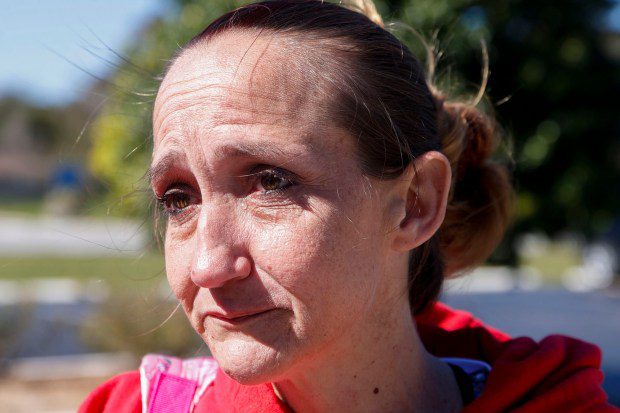
Luciano first came to Blaire through a referral when she was living at a women’s shelter. She said she had $20 in her pocket and wanted to get high — needed to.
Fentanyl withdrawal had left her shaky and cold. Her stomach was seizing, her muscles spasming. To quell the agony that day in early January, she went on the hunt.
Luciano said she had first used drugs when she was 9. Her family had been torn apart by pills and powders, she said, a sickness she’d inherited.
But this time, a woman — “like an angel” — passed her a number for someone who she promised could guide her into a brighter future, free of blame. Luciano, 39, paused, skeptical.
Then she reached out to Blaire.
For about a week, Blaire delivered her a daily dose of buprenorphine using a Safe RX bottle — essentially a trackable pill bottle with a lock code to limit who can open it. He helped connect her with food and clothing donations.
And as Luciano started to feel more like herself, absent of cravings, she began to hope.
Blaire scheduled an appointment for her with doctors at Beacon Point and then drove her to her first screening. Now, in the parking lot, she thanked him for everything.
“It made all the difference in the world,” Luciano told Blaire. “I really didn’t think that I could get better. I didn’t. But I am.”
As a tear slid down Luciano’s face, Blaire’s phone rang.
********
The call came from the health department. A man in his 40s or 50s had traveled about 40 miles from Gainesville, Florida, for help, directed through word of mouth.
He’d attempted to access a recovery center there but said he was turned away. Something about insurance and a criminal record had obstructed him.
It’s a pattern that frustrates Blaire. He’d seen it a lot before his team was formed. People would get a moment of courage or clarity, only to be told “not yet.”
“Your initial response has to be ‘yes,’” he said. “‘Yes, I can help you.’”
He knew about a woman who had come from 25 miles out of town, then was told to come back days later. She didn’t have a car or a home to return to.
“They didn’t even offer her a ride,” Blaire said. “Sometimes you only have one opportunity.”
Blaire has realized that building trust begins with a small gesture. A car ride. A sandwich. Help getting a government ID. Anything to show that you care, that you’re useful. That you see someone trying.
Outside the health department, a man in muddied jeans and a frayed T-shirt stood waiting on the curb. He introduced himself as Jetson and didn’t give a last name. Blaire shook his hand before they loaded into the car.
“So what brings you this way?” Blaire asked, once both were buckled in.
“I heard there were services here,” Jetson said, his voice gruff, quivering. “I’ve tried to stop using so many times, but I keep messing it up.”
Jetson shook his head.
“Well, I’m glad you found us,” Blaire said. He asked the man if he wanted to go to the recovery center for a screening. He did.
Over the 10-minute drive to Beacon Point, Blaire and Jetson talked, not about drugs or meds, but life. Baseball. Cabbage (good when fried).
When they pulled up, Blaire handed Jetson a card.
“Please call me,” Blaire said. “If you need anything. We can get you help.”
For a moment, the men sat there. Jetson pulling at his fingers. Taking deep breaths.
Then, he got out of the car — Blaire’s card in hand — and walked through the glass door.
____
This article was produced in partnership with the Tampa Bay Times.
___
(KFF Health News is a national newsroom that produces in-depth journalism about health issues and is one of the core operating programs of KFF — the independent source for health policy research, polling and journalism.)
©2024 KFF Health News. Distributed by Tribune Content Agency, LLC.
